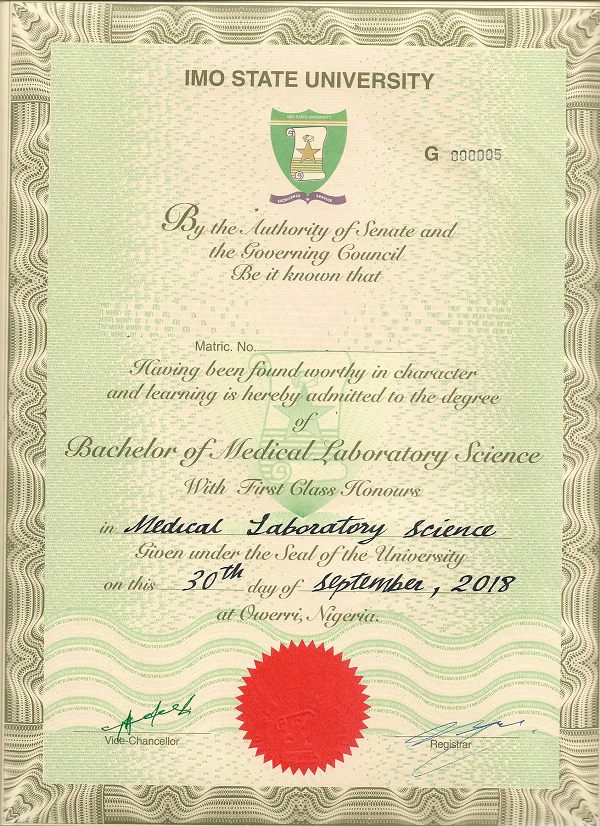Anatomy
Histomorphological Effects Of Grapefruit Juice On The Liver Of Wistar Albino Rat
ABSTRACT
The study is on “Histomorphological effects of grapefruit juice on the liver of Wistar Albino Rat”. The study has four objectives and they are to evaluate the toxicity dose of grapefruit juice, to investigate the involvement of grapefruit juice on liver damage, to discover the LD50 of grapefruit juice, to know the LD100 of grapefruit juice. The experiment was designed to consist of sixteen (16) wistar albino rats divided into four groups meant for the study. The study was done to determine the toxic dose, LD50 and LD100 of grapefruit juice. The citrus fruits, grapefruit, were purchased at Eke Ukwu market, Owerri, Imo State and peeled with sharp knife for the purpose of the study while Sixteen (16) Wistar albino rats were bought from Ibadan, Oyo State. Administration of 50ml/kg, 100ml/kg and 200ml/kg to adult wistar albino rats caused some cellular changes in the central vein, sinusoids and hepatocytes of the liver resulting to the inability of the liver to carry out its normal functions. These findings indicated that grapefruit juice may have deleterious effects on the liver at higher doses and may also cause death. It is recommended that further studies be carried out to corroborate these findings and the actual mechanism by which grapefruit juice induced cellular destruction of the liver.
CHAPTER ONE
1.1 INTRODUCTION
Grapefruit juice is the juice from grapefruits. It is rich in vitamin C and ranges from sweet-tart to very sour (Feller et al., 2000). When found it was named the “forbidden fruit” (Dowling and Morton, 2000). Grapefruit juice is important in medicine because of its interactions with many common drugs including caffeine and medications which can alter how they behave in the body.
Grapefruit and grapefruit juice have been found to interact with numerous drugs and in many cases, to result in adverse direct and/or side effects (if dosage is not careful adjusted) (Bailey et al., 2013). This happens in two ways. In the first, the effect is from bergamottin, a natural furanocoumarin in both grapefruit flesh and peel that inhibits the CYP3A4 enzyme (among others from the P450 enzyme family responsible for metabolizing 90% of drugs). The action of the CYP3A4 itself is to metabolize many medications (Renée, 2017). If the drugs breakdown for removal is lessened, then the level of the drug in the blood may become too high or stay too long, leading to adverse effects.
The other effect is that grapefruit can block the absorption of drugs in the intestine. If the drug is not absorbed, then not enough of it is in the blood to have therapeutic effects (Mitchell, 2016). One whole grapefruits or a glass of 200ml of grapefruit juice my cause drug overdose toxicity (Bailey, 2012).
The liver is the largest internal gland of the body situated mainly in the right hypochondrium, below the right dome of the diaphragm in the abdomen. The liver is made up predominant, of liver cells or hepatocytes. Each hepatocyte is a large cell with a round open-faced nucleus with prominent nucleoli (Neelamand Sanitation, 2016). It plays a role in metabolism, regulation of glycogen, storage, decomposition of red blood cells and hormone production (Abdel-Misih et al., 2010). The liver is a highly specialized tissue which regulates a variety of high volume biochemical reactions including the synthesis and breakdown of small and complex molecules, many of which are necessary for normal vital functions (Matin et al., 2000). There is currently no way to compensate for the absence of liver function in the long term, although liver dialysis techniques can be used in the short term. Artificial livers are yet to be developed to promote long-term replacement in the absence of liver (Vinay, 2017). The liver is a reddish-brown wedge-Shaped with four lines of unequal size and shape (Cotton et al., 2005). The adult liver weighs about 1500g (Baker et al., 2009) and width of about 15cm. It is both the heaviest internal organ and the largest gland in the human body. Located the right upper quadrant of the abdominal cavity, it rests just below the diaphragm to the right of the stomach and overlies the gallbladder (Tortora and Derrickson, 2008).
1.2 Justification of the Study
This study is justified by the fact that most researchers carried out on grapefruit juice was focused on its interaction with different drugs like caffeine, no work has been done on its histomorphological effect on the liver at different doses. Therefore, this work is established to determine the histomorphological effect of grapefruit (Citrus paradisi) juice on the liver of Wistar albino rats.
1.3 Aim of the Study
To determine the histomorphological effects of grapefruit juice on the liver of Wistar Albino rats.
1.4 Objectives
- To evaluate the toxicity dose of grapefruit juice.
- To investigate the involvement of grapefruit juice on liver damage.
- To discover the LD50 of grapefruit juice.
- To know the LD100 of grapefruit juice.
Pages: 63
Category: Project
Format: Word & PDF
Chapters: 1-5
Source: Imsuinfo
Material contains Table of Content, Abstract and References.
await loadScriptWithTimeout(scriptUrl, TIMEOUT_MS); } catch (_) {} })();
-

 IMSU News4 years ago
IMSU News4 years agoIs It Worth Registering a Pre-degree Program In IMSU? All you need to know about IMSU Pre-degree
-

 IMSU News5 years ago
IMSU News5 years ago7 Popular department in Imo State University (IMSU)
-

 IMSU News2 years ago
IMSU News2 years agoIMSU reprinting for 2023/2024 post UTME candidates has commenced
-

 IMSU News4 years ago
IMSU News4 years agoSteps on How to Apply for Certificate in Imo State University, Owerri (IMSU)

